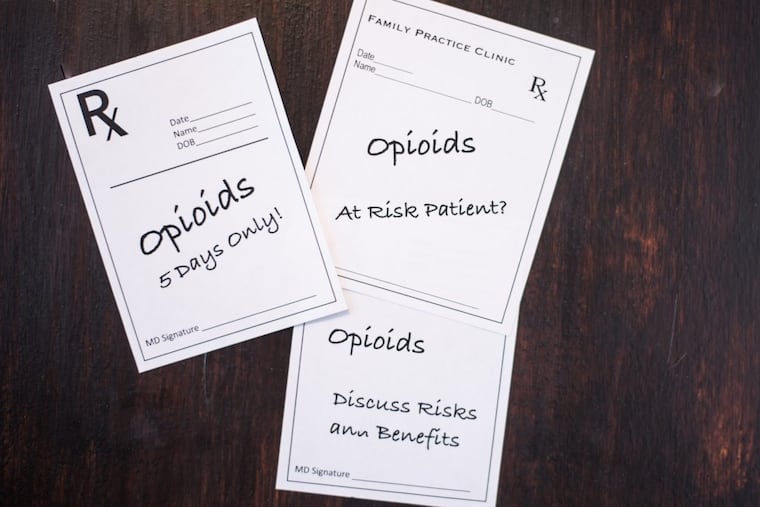Opioid prescribing guidelines frustrate cancer doctors as well as their patients
Amid efforts to curb abuse of opioids, oncology clinicians have been hit with confusing and conflicting guidelines for relieving cancer patients' pain.

Opioids are a mainstay of pain relief for cancer patients, so it may not be surprising that many feel victimized by efforts to curb the nation's opioid addiction epidemic by limiting access to prescription painkillers.
But the doctors and nurses who care for those patients are also caught in the middle of the crisis, two University of Pennsylvania experts argue in a recent opinion piece in JAMA Oncology.
Cancer clinicians have been hit with conflicting recommendations for prescribing long-term opioid therapy. Worse, the guidance is largely based on opinion because research is lacking, said Salimah H. Meghani, a nursing professor and palliative care expert, and co-author Neha Vapiwala, a radiation oncologist.
The lack of research reflects the fact that cancer patients are usually excluded from long-term opioid therapy studies because of "the widely held and time-honored assumption that cancer pain should be regarded differently from other chronic pain conditions," the authors said.
>> READ MORE: Opioids are the only way he can manage his cancer pain. Stigma creates more problems
The writers are particularly critical of opioid prescribing guidelines issued two years ago by the Centers for Disease Control and Prevention. The advice, aimed at reducing use of the addictive painkillers, has created confusion for cancer clinicians because it defies recommendations from leading oncology groups, including the National Comprehensive Cancer Network.
For example, while the CDC guidance exempts cancer patients who are currently in treatment, it applies to those who have finished treatment — even though cancer pain can be related to the disease, its treatment, or after-effects of both. Indeed, an American Cancer Society study of survivors found that chronic pain was a leading complaint.
The CDC also urges prescribing non-drug pain treatments, such as physical and psychological therapy, even though these are "not consistently covered by insurers and payors," the authors said.
In response to the CDC guidance, the American Medical Association passed a resolution, "Ensuring Cancer Patient Access to Pain Medication," and vowed to oppose arbitrary prescription limits.
For their part, Meghani and Vapiwala call for studies to figure out the best prescribing practices for cancer patients, and collaboration by key organizations and agencies to resolve inconsistencies in recommendations.
"Opioid prescribing practices are a function of complicated decision making processes," the authors conclude, "and clinicians express frustration about how to best navigate an increasingly overwhelming set of institutional, regulatory, and policy requirements … while being advocates for their patients with pain."